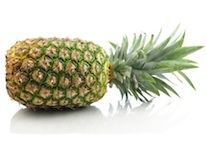
USA Network, which televises popular programs such as Burn Notice, Law & Order and WWE Monday Night Raw, teamed up with digital marketing agency 360i in an effort to engage its viewing audience by leveraging the meme concept. To help promote the premiere of Psych, the comedic drama that just kicked off its sixth season, the cable television network encouraged fans who were invited to the screening of the premiere episode to use the hashtag “#pineappling” when sharing photos on Twitter. This particular meme ties into the actual pineapple itself, a common Psych theme that sees the delicious fruit making an appearance on almost every episode of the hit show.
The pineappling meme produced solid results for USA Network as 360i reported that hundreds of fans have used the hashtag since the premiere, while the original post that introduced it on the Psych Tumblr generated more than 400 likes and reblogs. Having access to millions of Psych fans in the social media space helped the team of USA Network and 360i make an interactive and exciting affair out of the show’s season six premiere.
What’s up with Memes?
A meme is essentially a social concept or cultural symbol that makes a viral impact of sorts. Similar to a virus, it spreads from one person to the next, with propagation being its main source of life. In decades past, memes were carried by word of mouth. These days, they travel via email, social media and other channels associated with the internet, with some sites completely dedicated to the recognition, classification and generation of memes.
A perfect example can be seen in the memorable TV ad Wendy’s originally aired back in 1984. When presented with a wimpy looking burger in the commercial, the consumer, portrayed by actress Clara Peller, wanted to know one thing: “Where’s the beef?” In this case, the meme of course is “Where’s the beef?” The popular catchphrase has gone on to be used in television programs, magazines and various other media outlets to this day.
Memes can also encourage interaction, as is the case with pineappling, and a controversial pastime known as planking. KnowYourMeme.com says that planking started in 2006 with the “Lying Down Game,” but its origins can be traced as far back as the 1993 motion picture The Program. Whereas the vast majority of memes are harmless fun, planking in particular can be dangerous. Advocates of the pastime have been strongly promoting safety since a man from Australia plummeted to his death this past May trying to plank on a balcony.
Memes in Your Marketing
So what’s the verdict? Should you use memes in your marketing or not? That is totally up to you, but with the right execution, there is certainly a lot to gain. Okay, you may not have millions of Facebook fans or thousands of Twitter followers like a hit cable TV show, but that doesn’t mean you can’t make them work to your advantage. Whether it’s a captivating advertisement or catchy slogan, the ideal meme is something people can easily latch on to and want to share with others. From where we stand, they are perfect for the company wishing to make a viral splash.
Bear this in mind, however, that if you attempt to use previously established memes in your advertising, it may end up dating them worse than if you’d never tried at all. Memes are spontaneous, and some of the most enduring have arisen by accident, or even contrary to the original item they intended to promote.









